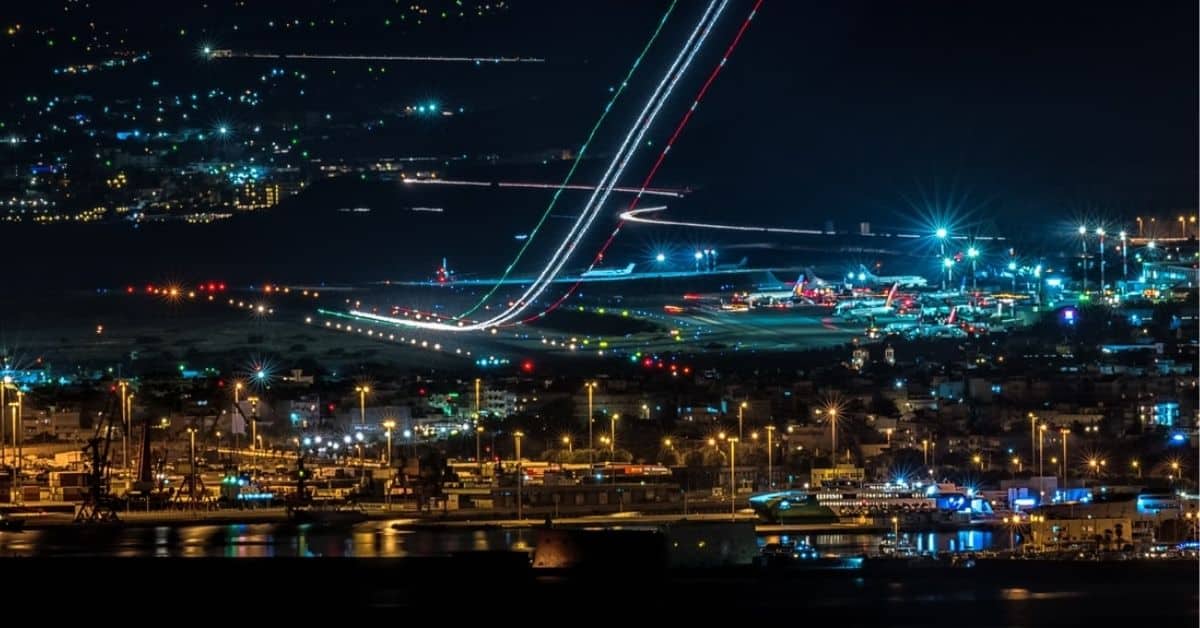You may be wondering if the time of day affects the ability of aircraft to fly at the same altitudes in which they fly at during the day.
Planes don’t fly lower at night; they have the same cruising altitudes as to what they fly at during the day. There is no safety reason for aircraft to fly lower at night, it is perfectly safe for them to do so.
Large commercial airliners typically fly at between 30,000 and 40,000 feet, regardless of the time of day.
How do Aircraft Fly at Night?
Aside from there being no hazards to aircraft flying at these altitudes at night, it would also not be commercially viable for them to fly lower. The higher an aircraft flies, the lower the fuel burn, which leads to improved overall fuel consumption and lower operating costs for the airline.
The lower fuel burn in which an aircraft experiences at higher altitudes is due to the density of the air. The higher the altitude, the thinner the air. Therefore, the aircraft’s engines must provide less thrust when compared to lower altitudes or at takeoff/landing.
Aircraft flying at night are equipped with numerous tools which allow them to operate safely at any time of the day. The use of Instrument Flight Rules (IFR) assists pilots in having a clear orientation in terms of situational awareness.
This is a system in which pilots navigate following a preselected set of flight parameters (altitude, speed, routing). This is filed as a flight plan prior to the departure of each flight.
In IFR flying, there is no need for using outside, visual references as a way of navigating. This greatly increases the weather conditions in which an aircraft can fly.
Modern-day commercial aircraft are also equipped with what is known as TCAS – Traffic Collision Avoidance System. This is an onboard visual and/or aural warning which alerts pilots of potential collisions with other aircraft.
In a night-time IFR situation, TCAS is a valuable safety system that provides indications to the flight crew of aircraft in the vicinity which may not be visible in poor lighting conditions.
At cruising altitudes in which there are 1,000 feet of vertical separation between aircraft (RVSM), TCAS is an important margin of safety in this regard. This is especially true for night flying in which there is no visual reference of aircraft above or below.
While the statement above mainly addresses commercial aircraft flying at night under IFR flight conditions, it is entirely possible for aircraft following Visual Flight Rules (VFR) to fly at the same altitudes at night.
Modern aircraft technology such as TCAS and controlled airspace allows aircraft to safely fly at the same altitudes during the night as during the day.
Read More:
Can A Plane Fly Without Wings?
What is an Aircraft Control Check?

After visiting more than 60 countries, I have probably been on every type of plane there is and visited countless airports. I did my very first international solo trip to South Africa at the age of only 16 and haven’t really stopped traveling since.
Despite the adventurous travel itch, I do have a nerdy side as well – which is satisfied by writing about all things aviation “too boring” for my regular travel blog.
